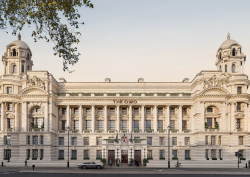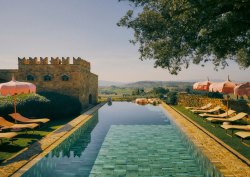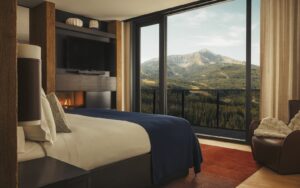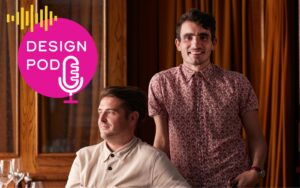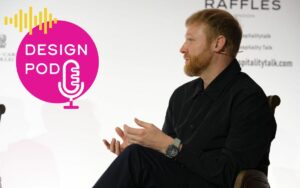Roundtable: Exploring Global Influences in Hotel Design
In collaboration with Italian contemporary fabric editor, Dedar, Hotel Designs hosted a roundtable discussion at the Dedar showroom at Design Centre Chelsea Harbour that saw prominent industry designers share their thoughts on the impact of cultural reference in global hospitality projects…
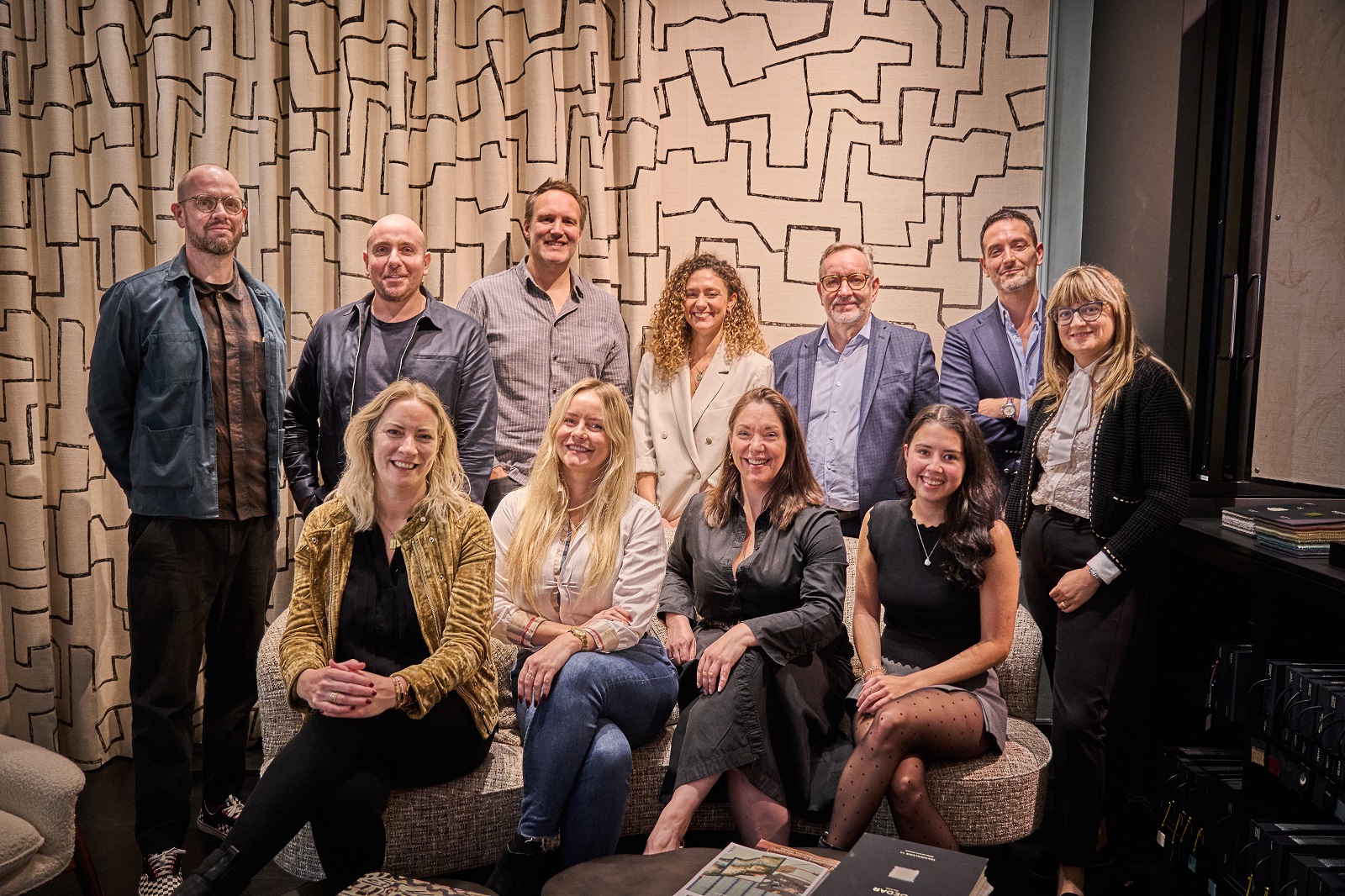
During the first throws of slightly soggy autumnal weather, a group of interior design experts gathered in Dedar’s chic Chelsea Harbour showroom, where they were able to discuss the challenges of introducing cultural aspects into their designs. Moderated by Sophie Harper, the session explored cultural influences, storytelling, collaboration, and the future of design. This event was a melting pot of ideas, experiences, and innovation, with participants sharing anecdotes, challenges, and philosophies that continue to define the industry’s evolution.
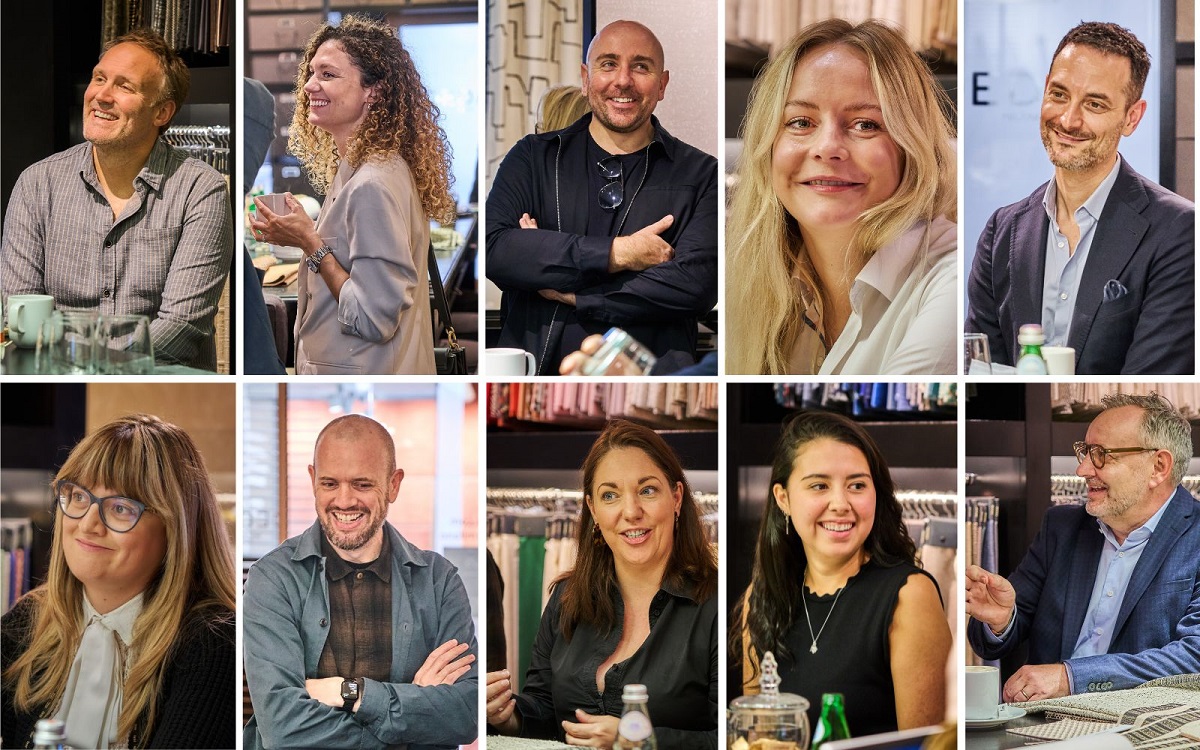
Left to right from the top: James Lees, Clemence Pirajean, both Founders, Pirajean Lees; Shayne Brady, Co-founder and Director, BradyWilliams; Ramona Bittere, Senior Designer, Muza Lab; Matteo Martini, General Manager UK, Dedar; Ilaria Orsi, Head of Contract Business, Dedar; Adam Davies, Design Director, Tara Bernerd; Kelly Martinez, Project Lead, David Collins Studio; Shona Brannan, Designer, DesignLSM; Nick Hickson, Founder and Director, THDP. Photography by Mel Yates.
The roundtable began with a discussion on the importance of narrative in designing spaces influenced by different cultures with James Lees and Clemence Pirajean emphasizing the importance of creating a ‘narrative script’ to guide design decisions.
James Lees: “We call ourselves narrative designers, where we create in-depth narratives, so we spend a lot of time not designing, which is quite hard to pitch to clients!”
Clemence Pirajean: “We do have to say to clients ‘don’t worry’ because the first couple of weeks we don’t design, we don’t even look at visual references or anything – we purposefully don’t do that to remove any risk of creating a theme or gimmick or going for the obvious, so we work on creating a narrative instead. Sometimes we come up with a story or we refer to a poem. Sometimes it’s all made up because there’s nothing to draw from, or sometimes the project is so rich when we do our research that the narrative just comes very naturally.”
James: “We did a project called Kioku in The Old War Office and we had to bring in that influence and stylisation of Japanese background into that space. The building itself is very traditionally English – so we had to work out how to do that without being too ‘clashy’ with the rest of the building.”
Clemence: “We avoid a theme or gimmick and work on cultural values and principles to create unique projects. This philosophy allows designers to infuse emotional depth into spaces, resonating with both locals and international guests.”
James: “It’s difficult to steer clear of gimmicks completely – we do try not to go too ‘Disney’ – sometimes you can see things starting to go that way and you have to pull it back! But when you find a niche or a ‘hook’ in the narratives that we create we say that’s then the designer, so we’re not really designing the spaces, once we have this script or narrative that’s the designer and we just do what that script tells us to do. We find that’s the best way to slot a specific culture into something that otherwise might clash.”
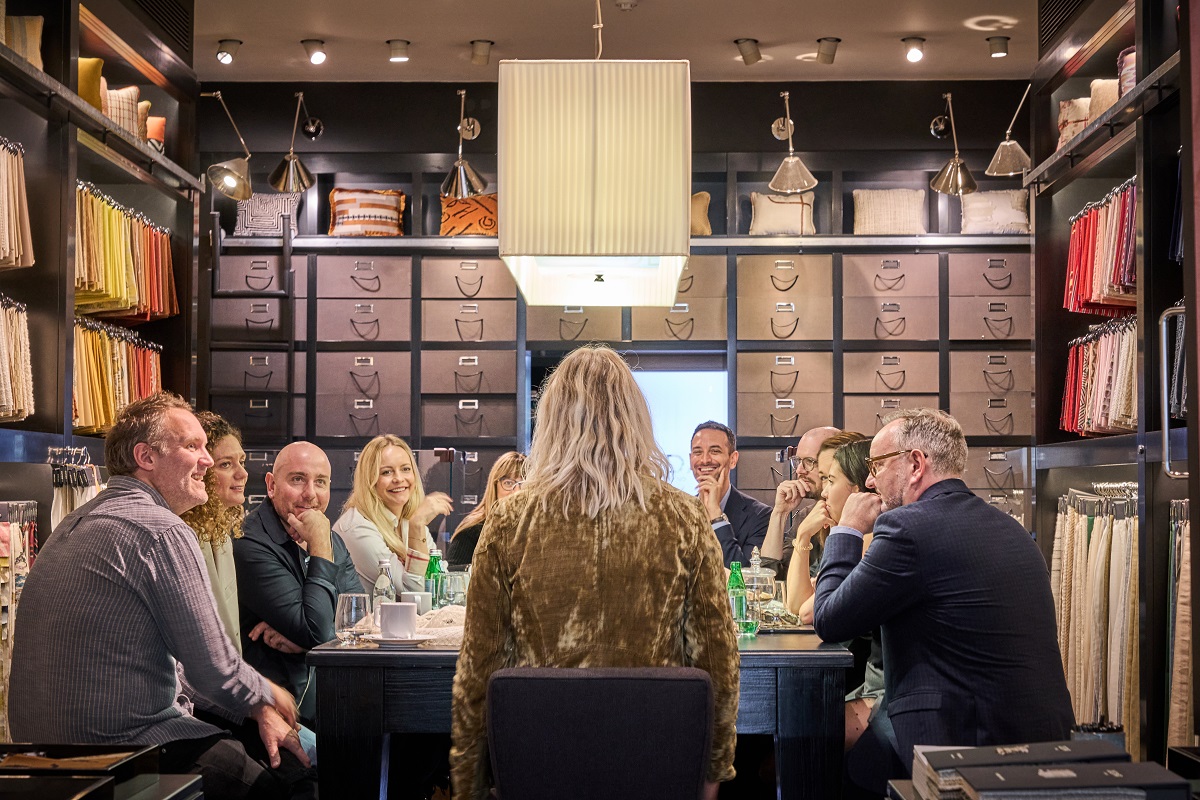
Image credit: Mel Yates
The challenge of integrating global and local cultural influences without resorting to clichés became a central focus of the discussion and Sophie Harper asked the group: “How do you piece together all these separate parts though if you’re unfamiliar with the culture and not guided by visuals?”
James: “By doing a crazy amount of research! Our office is quite culturally different, we have a lot of people from different countries and that really helps. Some of our team are from South America, China, Japan, India and having that mix of cultures is great – we learn from them every day.”
Nick Hickson: “Also, what is culture? What does it actually mean? We could spend all morning defining that, but for me when I start a project I begin by looking at the materiality of the location. If you go to a particular region there might be a specific type of pottery because of the type of clay or sand that’s found in that location and therefore that kind of artisanship of the locality often feeds through into all the products that are made locally. If you’re able to fold that materiality into your designs, that then speaks of the vernacular. Even down to the technique – the way things are made, can you incorporate local craftsmanship into a project by figuring out how things are made locally? When I studied furniture design it was such an important aspect to me – how the wood was joined and formed, and the joint becomes part of the design. It’s that starting point that then feeds through – every little detail, and all those details form the design.”
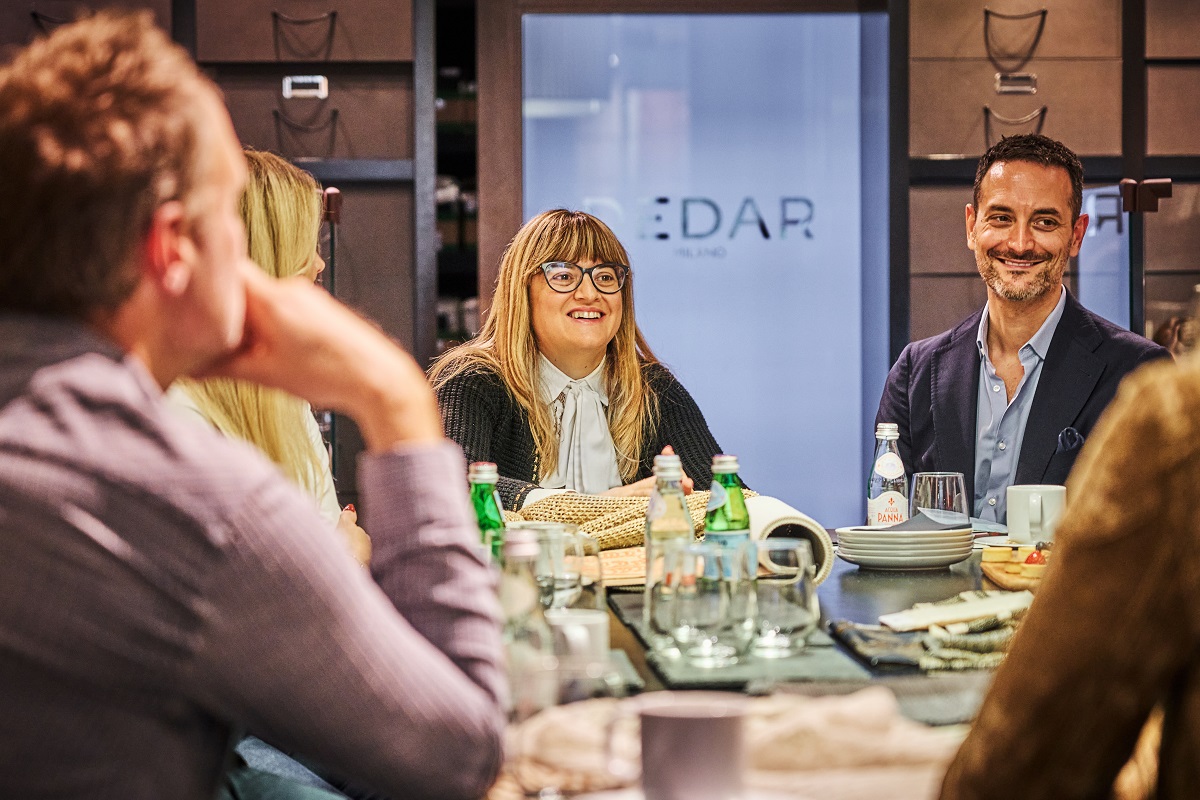
Image credit: Mel Yates
Connecting the dots between design details and materiality, Sophie asked Matteo where the inspiration for different patterns and prints come from within Dedar’s fabric collections. Matteo showed us a photograph of Dedar’s co-owners, Caterina and Raffaele Fabrizio, as children in India.
Matteo Martini: “They used to travel a lot with their parents because initially the company, when it was founded in the ’70s, was actually importing textiles, fabrics from India and the Middle East. And then 20-25 years ago it changed and it became what we are now, but that spirit of exploring, having an open mind, looking at different sources of inspiration, really sunk in and stuck with them.
“We’re based near Milan. Milan is the capital of fashion in Italy and we rely a lot on a network of textile experts in the area, weavers and mills – they work with both fashion brands and us, so inspiration can come from fashion and couture too.
“Raffaele Fabrizio, Dedar’s Creative Director, is an architect by education and he’s really passionate about art, so there’s a lot of cross-pollination in that sense. Architectural references in the products could be some archetypes of the library or specific buildings. In the latest collection, Raffaele was inspired by the delicacy of the illustrations and the materials used, such as raffia and rattan, in the Villa Santo Sospir by Jean Cocteau in Saint-Jean-Cap-Ferrat.
“We see ourselves as the contemporary interpreter of the Italian textile tradition, so we try to combine this contemporaneity with, of course, the quality and the elegance, which is timeless at the same time.”
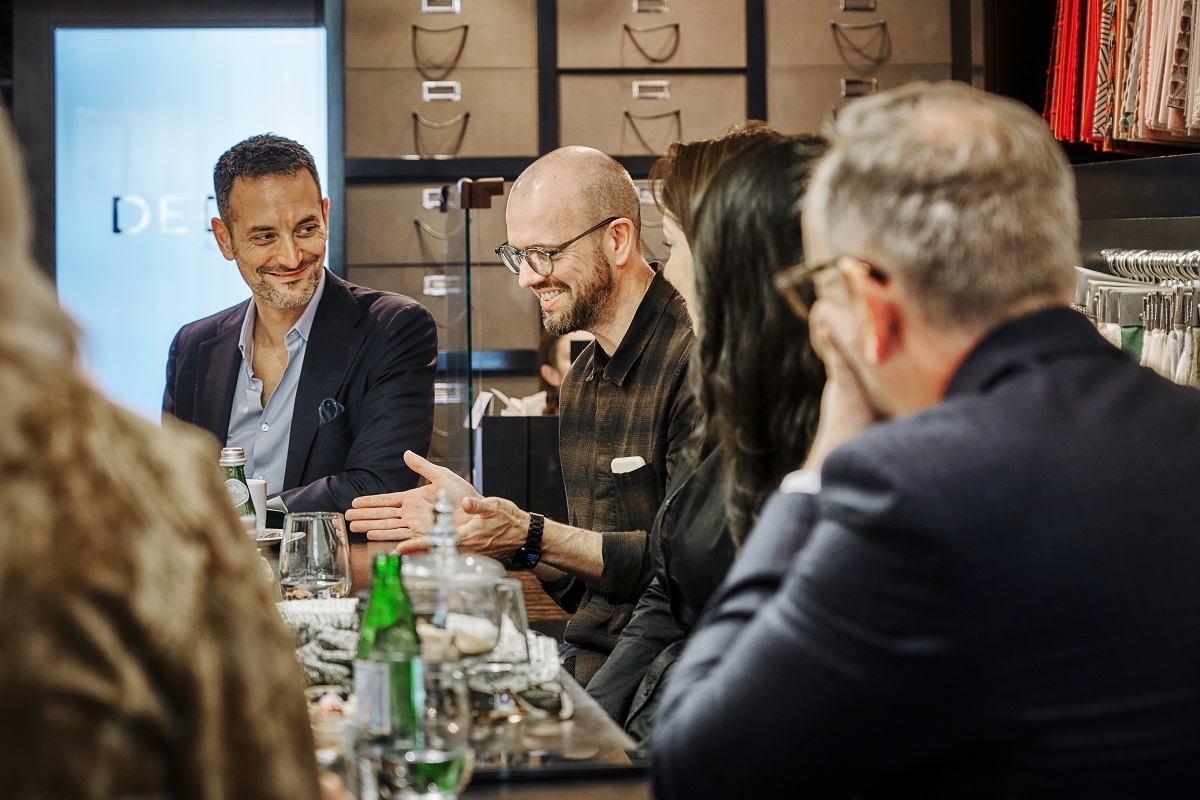
Image credit: Mel Yates
The group agreed that acute attention to detail was key in the success of implementing authentic cultural references, but Ramona Bittere from Muza Lab was quick to point out the advantages designers have as cultural outsiders:
Ramona Bittere: “We have the benefit of being a foreigner designing something from someone else’s culture and DNA, because when you are growing up and constantly surrounded by one culture you almost start to ignore it – we all take our own culture for granted and sometimes lose the appreciation for it but then a foreigner to that culture will pick up on the small details and celebrate those things.”
Shona Brannan: “I think subtle touches are the most impactful. The little nods to tradition and culture, they’re what makes a design really coherent and gives the guest that sense of authenticity and that all comes from good research.”
Reflecting on their own experiences, a number of the group stressed how important it was to attach emotion and feeling to cultural aspects of design rather than relying on bare visual impact.
Kelly Martinez: “I find whenever I get a project in a certain region, I’ll look at different authors who grew up there and read their work, because it’s not just about what you could find in the media and the historical. It’s the emotions that people have in those spaces and how we can translate that into an interior. And not just the interior, everything from the uniforms to the little napkins. I think all of those details and trying to get your clients to actually buy into that narrative is so important.
“We were very lucky to have a Raffles project where we created a story about this ‘Lady Dottie’ back when people first started to travel to Egypt. We concentrated on what she would have seen and her emotions in the spaces, rather than the visual kind of historical images of Cairo. I think it’s really important to bring that to clients.”
Clemence: “The emotion is very important. You can communicate, you can emphasize a culture, whether it’s the local setting of the project or inspired by somewhere else in the world, whatever it might be – but how do you give an emotional feeling of that?”
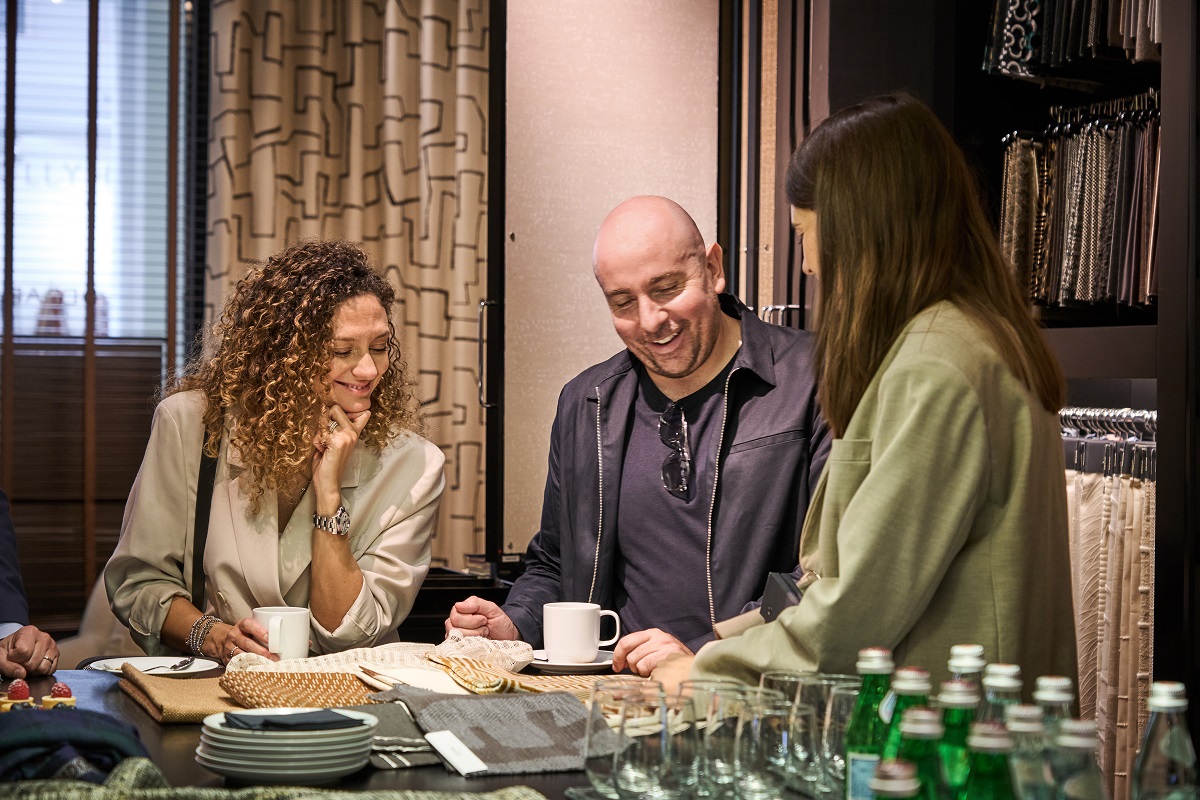
Image credit: Mel Yates
The group observed a significant shift in the hospitality industry’s approach to design with more time factored into creating a story that resonates with the guest and the design of a property.
Shayne Brady: “I think operators and clients are getting far better – from say 20 years ago when it was very much about getting the job done with no time given for a narrative or storytelling. Whereas now, in the world we live in, they’re much more open to having all of that good stuff, because it helps them sell the brand, the venue, at the end of the day. There’s more honesty to the whole journey that gives it conviction, which I think is really important.”
Adam Davies: “I think being further down the line with the clients, that’s totally correct. Sometimes when you’re trying to avoid the ‘Disneyland’ thing, you’re trying to come up with these little stories, and you’re thinking, is this cheesy? Is this right? If you do invest the time, then you kind of deconstruct it and that becomes so useful when a project is complete and you’re retelling those stories.”
Nick: “There’s a movement in Turin that started some years ago called ‘slow food’, and the same theory in a way should apply to design. Slow food is about returning back to the simplicity of cooking, experience the ingredients, preparing them in the right way. It’s a very Italian way of thinking, because many Italian foods are so simple.”
Shayne: “I think that takes confidence, though, from the designer and from the operator, to have confidence in that conviction – to be simple and slow in your thinking. I think it’s a great thing by the way – they always say simplicity is the hardest thing to achieve. But you do need the client to be on the journey with you and to share the same confidence, and sometimes they can get scared.”
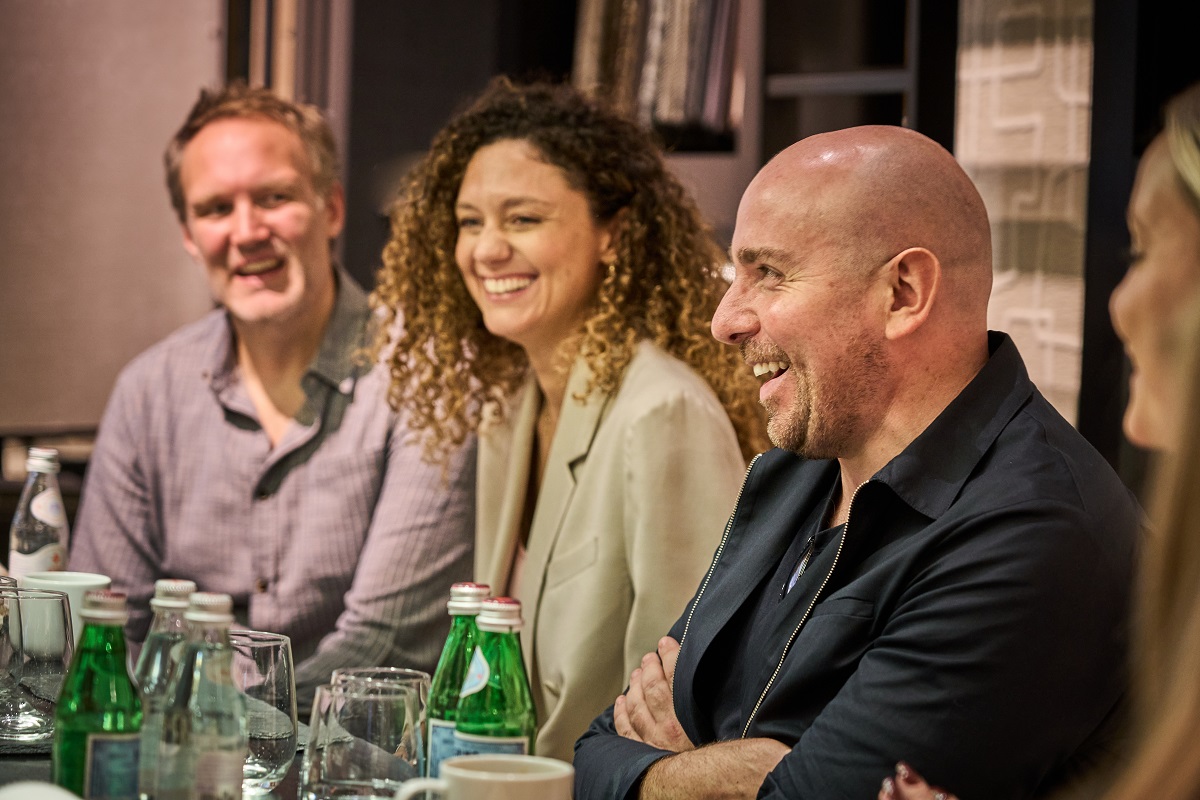
Image credit: Mel Yates
Sophie: “What is the relevance of injecting different cultural aspects into a design? Is it for a specific market or is it because you’ve just got a brief or because that just so happens to be the cuisine that the restaurant’s serving?”
James: “Sometimes we have clients who just come up and say, I want a Portuguese restaurant. And that’s the brief! Actually, we had a project, the Emirates Hotel in Dubai, where we were working with a really good chef and he wanted to re-induce Arabic food to the locals because it was just lost. He travelled around Iraq and all these places and sat with mothers and learned home cooking. For me that’s really interesting. He said he wanted he wanted a shisha and I said oh no, we’re not doing shisha – but it was because we didn’t understand – he said, we have a shisha sommelier that pairs the shisha flavouring with the food you eat. That’s when we got crazy excited!
“From there we formed the narrative side. We found Majlis Architecture and we looked into a form of graffiti artwork women used to do in their homes. Basically the artwork was being rude about the husbands, but the husbands didn’t realise and just thought it was beautifully decorative. We found one of these artists in Iran and she came and worked with us.
“When we opened, it was never supposed to be a space only for women, and actually it doesn’t feel overly feminine, it still feels quite masculine, but now it’s packed with mainly women – and so sometimes the narrative can change the ambience of a space.”
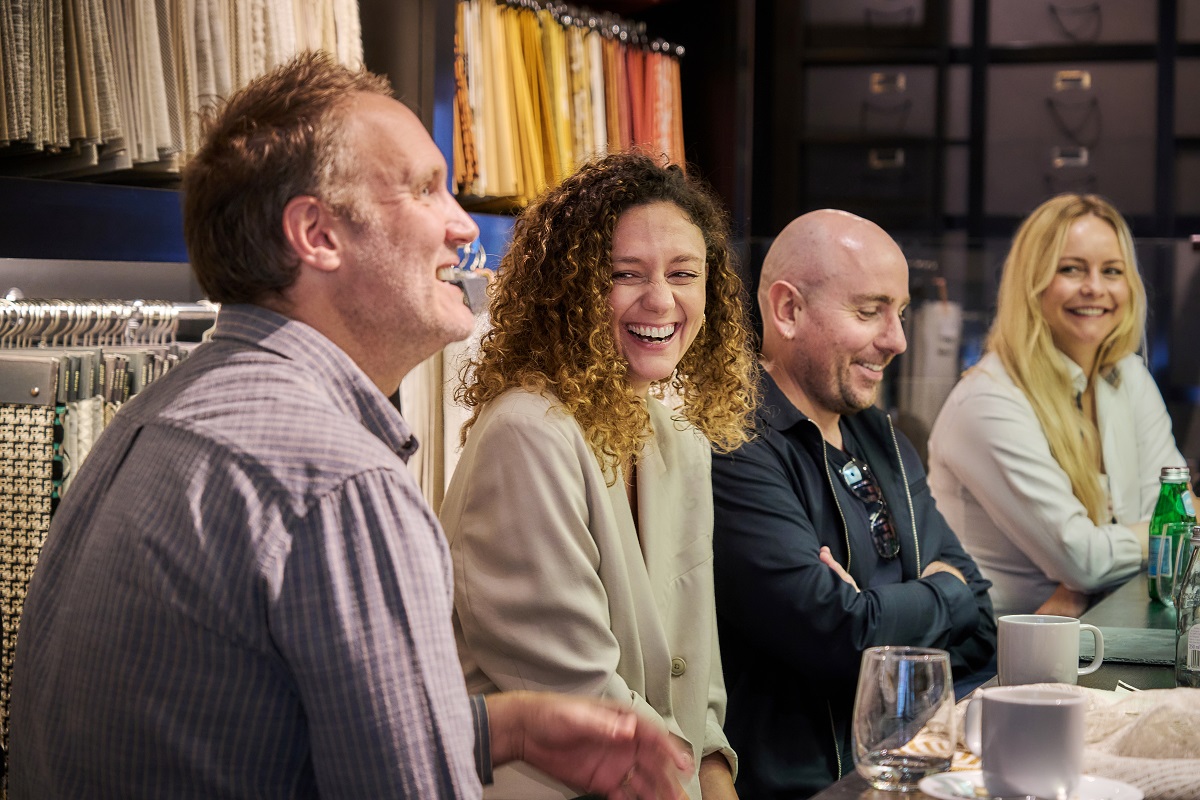
Image credit: Mel Yates
Shayne: “We had a project – The Maine Mayfair – where ‘New England meets British Tavern’ was the brief. But that client had kind of grown up somewhere in New England and on the Maine coastline, so for him it was very much childhood memories and passions from that time that gave him really fond memories that he wanted infused in the design. It was very client-specific, but sometimes that’s also a good thing because it feels relevant and creates a connection rather than just being made up for the sake of getting people in the door.”
Kelly: “A lot of operators do just want to get people through the door though. There was a project in Nigeria where after a bit of research, we found out that they were the biggest consumers of pink champagne in the world – with that sort of see and be seen kind of glam – so that’s what the client wanted. There was a meat restaurant with big meat lockers, a mirror covered bull hanging from the ceiling, colour, vibrancy. It hasn’t been built yet, but yeah it was very over the top to attract the local market.”
Shona: “Sometimes it’s easier delving into a foreign culture because you’re like, oh, there’s so much I can learn about. But trying to find a new angle or a new references to come into a place can be difficult as you don’t want to go down the obvious route – and then sometimes you just find gold, you know? We had a project in Glasgow and the site for the hotel was derelict for a really long time before half of it was demolished for this new project. I was searching and searching trying to find that little kernel and then I came across this artist that made models. She had fond memories of the original building as it used to be her art studio – she made a full-scale model of the derelict building and it was really interesting. We took from that the kind of artistic expression of people in Glasgow that shows the kind of rebellious soul they have.”
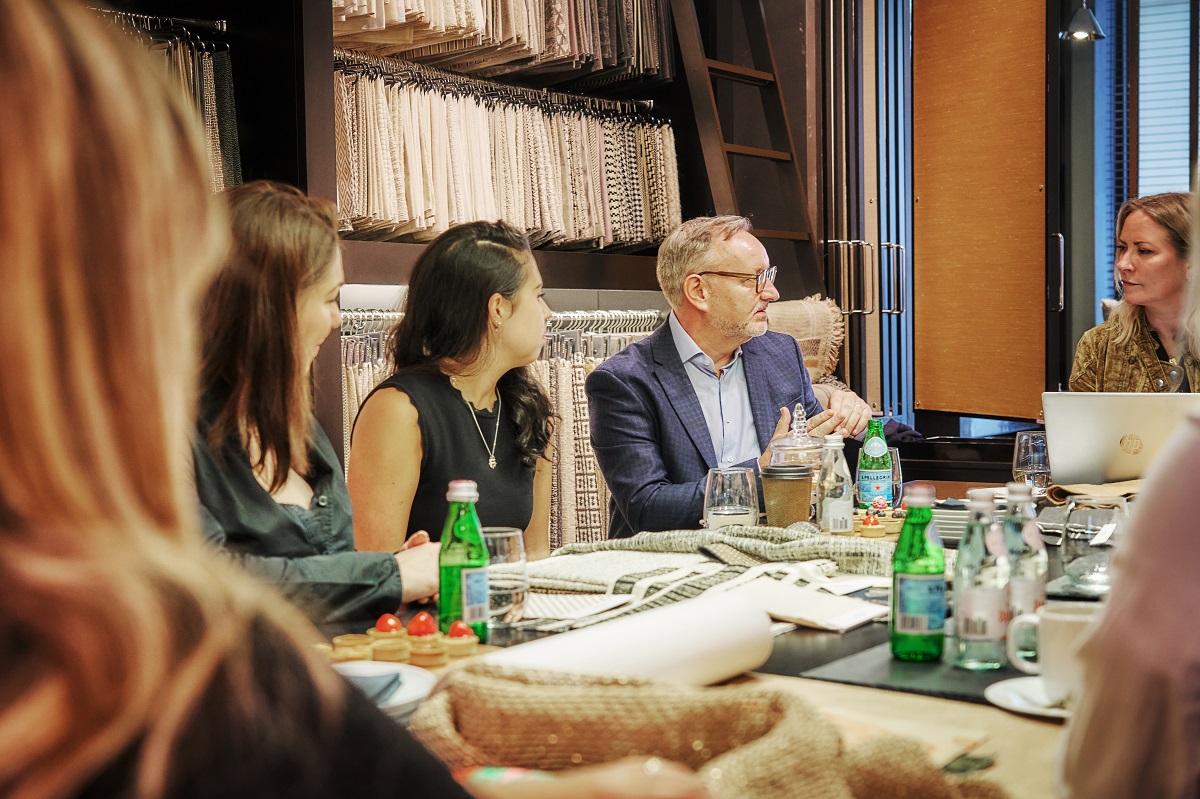
Image credit: Mel Yates
We discovered that this approach was shared by others, underlining again the importance of human connection and discovery. Even when faced with challenging briefs or problems put forward from clients, the solution it seems is to stay true to the original idea or concept.
Looking to the team at Dedar to round off the conversation, the group asked Matteo and Ilaria about their experiences on challenging projects.
Matteo: “It’s the mindset with Italian family businesses to be able to overcome obstacles and try to find a solution to make your client happy and satisfied. Even sometimes the challenges can be quite hard and we as a company try to be as innovative as possible in pushing boundaries with different materials. Once, when one of our suppliers received the brief from the company, he said: ‘you want to go to the moon driving a Vespa?’ But we always find a way to get the final result.”
Ilaria: “Suppliers are not on only suppliers of goods but they are partners, especially for big projects. We are really feeling this in recent months and years in which we are more involved in big contract projects. The main Italian, French, British and US interior designers really search in us as a partner to reinterpret and try to find in the archive what can be useful for their projects.
“This is something that we really work hard on – not simply with our normal collection but also customising goods especially for these projects because it’s important, as you said, to look to the roots of the origins, traditions locally and not having the same minimalist style everywhere in the world.”
The roundtable underscored the transformative power of storytelling, collaboration, and authenticity in hospitality design. By integrating cultural narratives, respecting tradition, and embracing innovation, designers can craft spaces that resonate on a deeper level.
Main image credit: Mel Yates
Dedar is one of our Recommended Suppliers and regularly features in our Supplier News section of the website. If you are interested in becoming one of our Recommended Suppliers, please email Katy Phillips.






